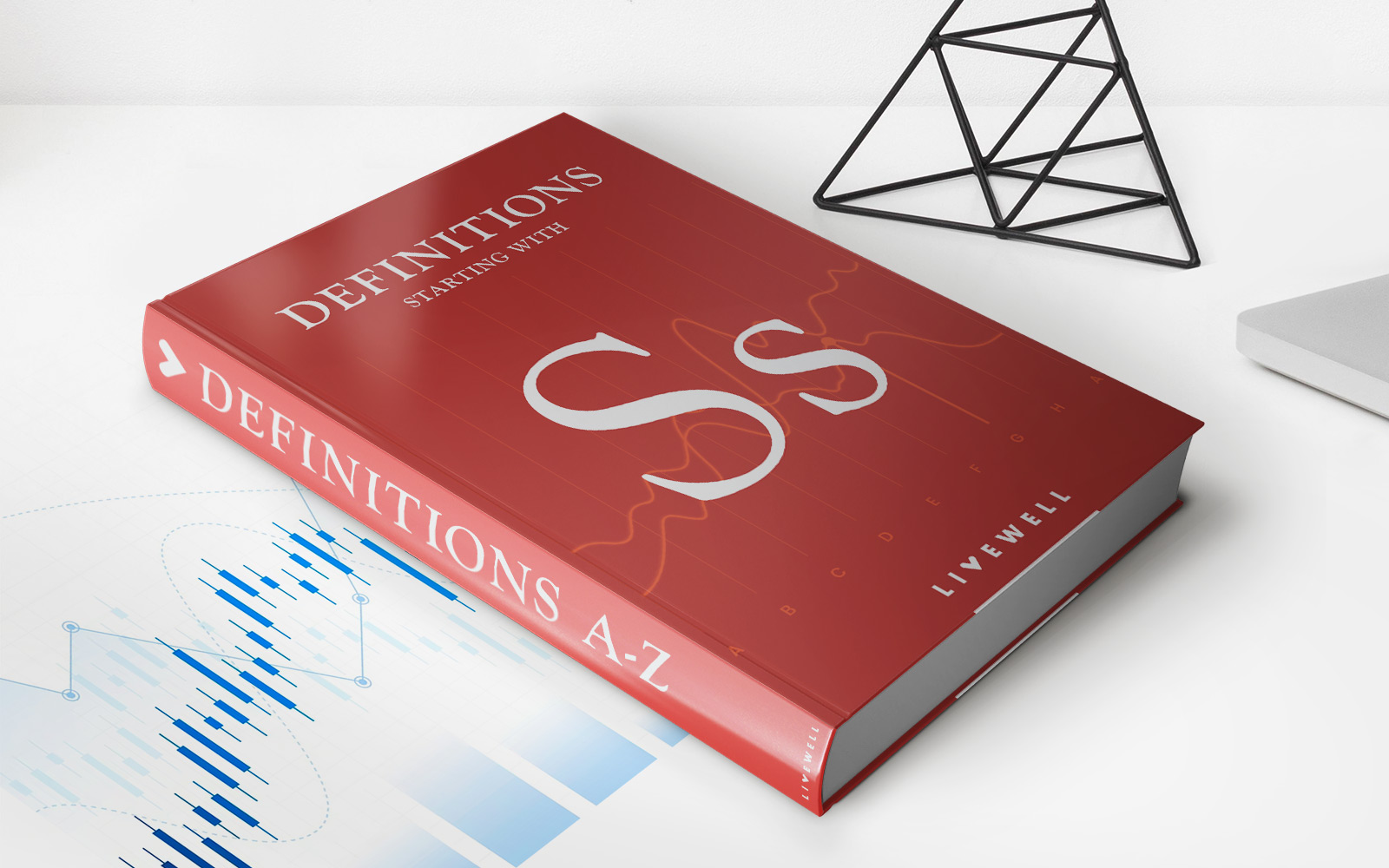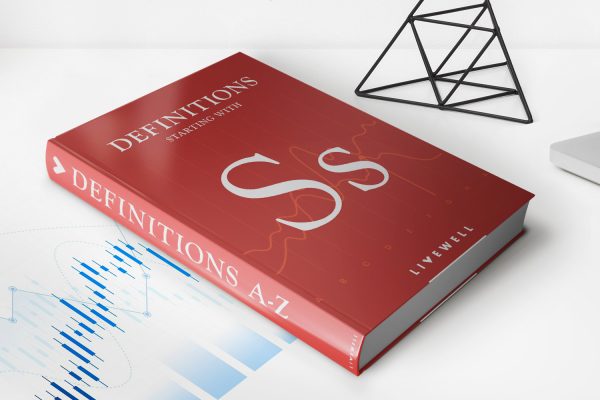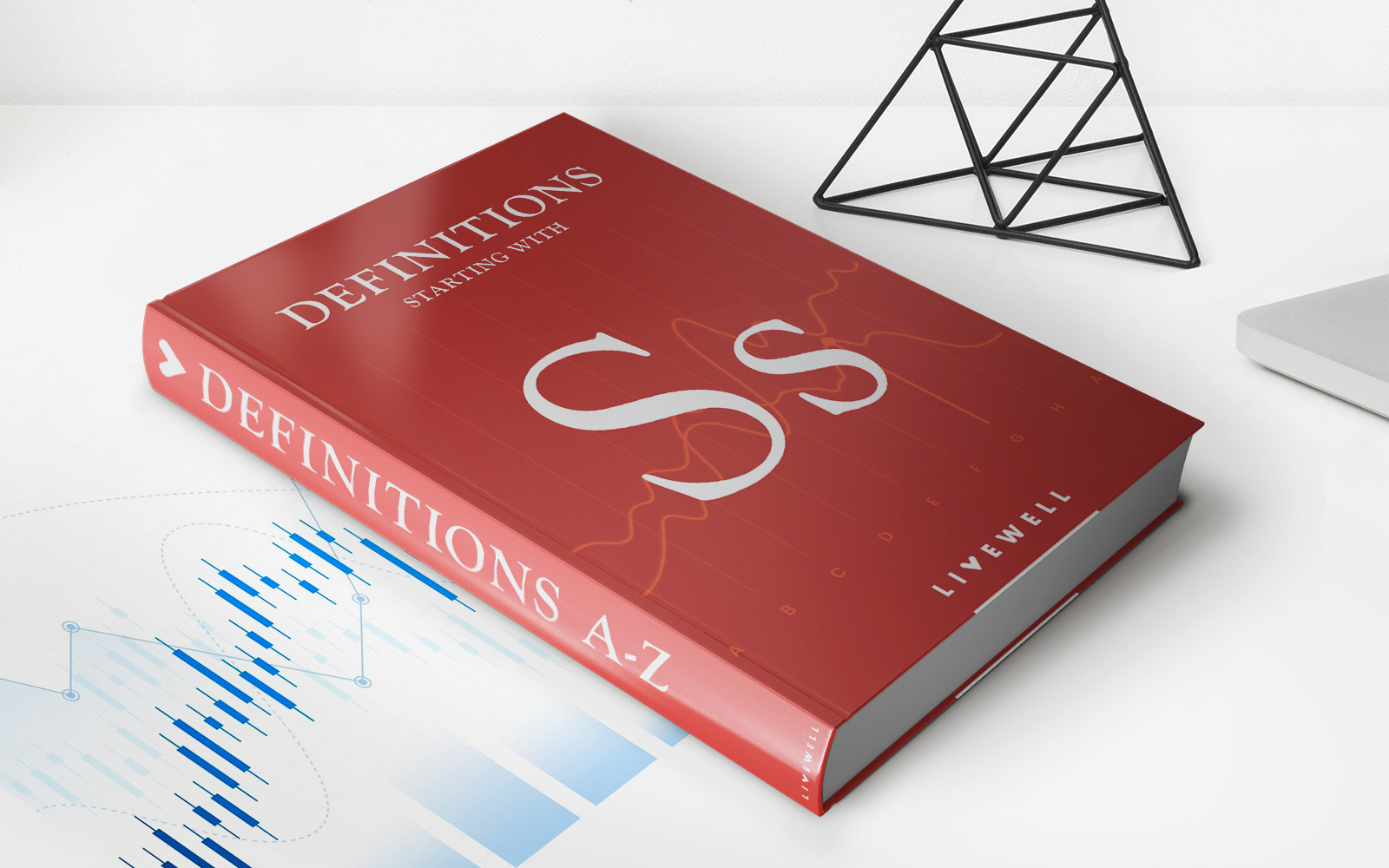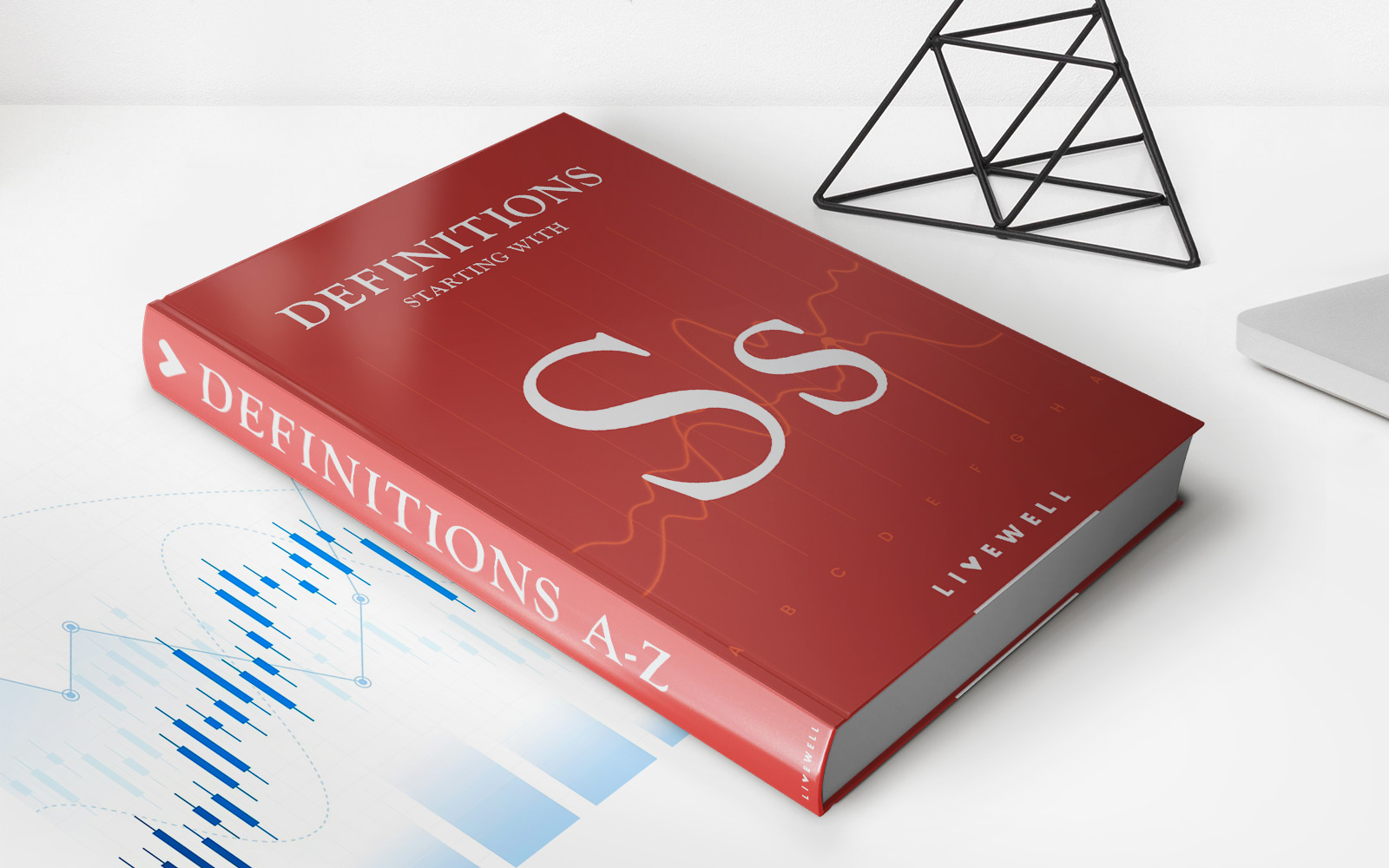

Finance
What Is Shadow Accounting
Published: October 7, 2023
Discover the concept of shadow accounting and its implications in the world of finance. Uncover the role it plays in managing financial risks and enhancing transparency
(Many of the links in this article redirect to a specific reviewed product. Your purchase of these products through affiliate links helps to generate commission for LiveWell, at no extra cost. Learn more)
Table of Contents
- Introduction
- Definition of Shadow Accounting
- Purpose of Shadow Accounting
- Key Features of Shadow Accounting
- Benefits and Challenges of Shadow Accounting
- Examples of Shadow Accounting in Practice
- Potential Applications of Shadow Accounting
- Regulatory and Legal Considerations
- Comparison to Traditional Accounting Methods
- Conclusion
Introduction
In the world of finance, accurate and transparent accounting is crucial for businesses to thrive and make informed decisions. Traditional accounting methods have long been the foundation of financial reporting, providing a clear and regulated framework for recording and analyzing financial transactions. However, with the evolution of technology and the increasing complexity of financial markets, new accounting practices have emerged to supplement and enhance traditional methods.
One such practice is shadow accounting, which has gained traction in recent years as a valuable tool for financial analysis and risk management. Shadow accounting refers to the process of independently reconciling and verifying financial data outside of an organization’s official accounting system. This practice allows businesses to have an additional layer of financial oversight and analysis beyond what is provided by their traditional accounting methods.
Shadow accounting operates in parallel to a company’s primary accounting system, tracking and reconciling financial information using alternative methodologies and systems. The purpose of shadow accounting is to provide a comprehensive and unbiased view of a company’s financial position, assets, and liabilities. By validating and cross-referencing financial data through a separate accounting process, businesses can gain a deeper understanding of their financial health and make more informed decisions.
The use of shadow accounting has grown in popularity due to the advantages it offers. By leveraging alternative accounting methods and systems, businesses can identify discrepancies or inconsistencies in their financial data, which may go unnoticed in their primary accounting system. This allows for early detection of errors or potential fraud, enhancing the overall integrity of financial reporting. Furthermore, shadow accounting provides an opportunity to assess and evaluate the effectiveness of existing accounting practices, enabling businesses to refine their processes and improve efficiency.
While shadow accounting offers numerous benefits, there are also challenges to consider. Implementing and maintaining a separate accounting system requires significant resources, including skilled professionals and sophisticated technology. Additionally, ensuring synchronization between the primary accounting system and the shadow accounting process can be complex and time-consuming. However, the potential advantages and insights gained from shadow accounting often outweigh these challenges, making it a valuable practice for many organizations.
Throughout this article, we will explore the key features, benefits, and challenges of shadow accounting. We will also examine real-life examples of organizations utilizing shadow accounting and discuss its potential applications. Furthermore, we will shed light on the regulatory and legal considerations associated with this practice. Through a comprehensive understanding of shadow accounting, businesses can determine if integrating this approach into their financial operations is beneficial for their specific needs.
Definition of Shadow Accounting
Shadow accounting refers to a supplementary accounting process that runs parallel to an organization’s primary accounting system. It involves the independent tracking, reconciling, and validation of financial data using alternative methodologies and systems. By operating outside of the official accounting system, shadow accounting provides an additional layer of financial oversight and analysis.
The purpose of shadow accounting is to ensure accurate and transparent financial reporting by cross-referencing and verifying the data recorded in the organization’s primary accounting system. This practice allows businesses to uncover discrepancies or inconsistencies that may arise from errors, fraud, or external factors that impact financial data integrity.
Shadow accounting can be implemented within different areas of accounting, such as asset valuation, risk management, or even specific transactions. For example, in the realm of investment management, shadow accounting is commonly used to independently track and verify the performance and valuation of investment portfolios. By comparing the results of the shadow accounting process with the official record, investors can gain a comprehensive understanding of the accuracy of reported investment returns.
While the primary accounting system remains the official record for financial reporting and compliance purposes, shadow accounting provides a secondary source of information that enhances the organization’s ability to identify and address potential risks and discrepancies in a timely manner. This additional layer of financial oversight can contribute to more reliable financial statements and informed decision-making.
It’s important to note that shadow accounting is not intended to replace the primary accounting system but rather to supplement it. The data tracked and reconciled in shadow accounting is meant to be used for internal analysis, risk management, and decision support, rather than external reporting obligations.
The implementation of shadow accounting requires the use of separate systems, processes, and methodologies to ensure independence from the primary accounting system. This often involves the involvement of specialized professionals with expertise in both the primary accounting system and alternative accounting methods. Additionally, robust data reconciliation and validation procedures need to be put in place to ensure the accuracy and reliability of the shadow accounting process.
Overall, shadow accounting plays a crucial role in enhancing financial transparency, identifying discrepancies, and providing organizations with an additional layer of financial oversight. By cross-referencing and validating financial data through an independent process, businesses can strengthen their financial reporting integrity and make more informed decisions.
Purpose of Shadow Accounting
The purpose of shadow accounting is multi-fold, aiming to enhance financial transparency, improve risk management, and support informed decision-making within an organization. By running parallel to the primary accounting system, shadow accounting serves several key purposes, which we will explore in this section.
First and foremost, shadow accounting provides an additional layer of financial oversight and analysis. By independently tracking, reconciling, and validating financial data, it acts as a safeguard against errors, omissions, or potential fraud that may occur in the primary accounting system. This helps to improve the accuracy and integrity of financial reporting, enhancing transparency for both internal stakeholders and external parties such as investors, regulators, and auditors.
Furthermore, shadow accounting contributes to effective risk management. By comparing the results of the shadow accounting process with the official records, organizations can identify discrepancies and potential risks more efficiently. This early detection allows companies to take proactive measures to address and mitigate those risks, reducing the likelihood of financial losses or reputational damage.
Another purpose of shadow accounting is to support more informed decision-making. The additional layer of financial oversight provided by shadow accounting allows organizations to gain deeper insights into their financial data. By cross-referencing and validating information using alternative methodologies, businesses can identify trends, patterns, and discrepancies that may not be readily apparent in the primary accounting system. This valuable analysis helps management make more informed and strategic decisions relating to financial planning, resource allocation, and investment opportunities.
Moreover, shadow accounting can be instrumental in ensuring compliance with industry regulations and accounting standards. By independently verifying financial data, organizations can identify any non-compliance issues more effectively and rectify them before external audits or regulatory examinations take place. This proactive approach not only mitigates potential penalties and legal risks but also builds trust and credibility with stakeholders.
Additionally, shadow accounting can serve a vital role in enhancing communication and collaboration within an organization. The process of independent reconciliation and validation of financial data requires coordination and cooperation between different departments such as finance, operations, and risk management. This collaboration fosters a deeper understanding of the financial landscape and promotes transparency and accountability across the organization.
Overall, the purpose of shadow accounting is to enhance financial transparency, improve risk management, support informed decision-making, ensure regulatory compliance, and foster collaboration within organizations. By operating in parallel to the primary accounting system, shadow accounting provides an additional layer of financial oversight that strengthens the integrity of financial reporting and facilitates better financial management.
Key Features of Shadow Accounting
Shadow accounting encompasses several key features that distinguish it from traditional accounting methods and contribute to its effectiveness as a supplementary financial management tool. Understanding these features is essential for organizations considering the implementation of shadow accounting. Let’s explore the key features of shadow accounting in more detail below.
- Independent Reconciliation: One of the primary features of shadow accounting is its independence from the organization’s primary accounting system. This independence allows for the unbiased tracking, reconciling, and validation of financial data using alternative methodologies and systems. By operating independently, shadow accounting serves as a valuable check and balance mechanism, ensuring that there is an additional layer of oversight to identify discrepancies or errors in financial data.
- Alternative Methodologies: Shadow accounting utilizes alternative methodologies for tracking and analyzing financial data. These methodologies may differ from the processes and systems employed by the primary accounting system. By adopting different approaches, such as using different valuation models or calculation methods, organizations can gain additional insights and perspectives on their financial information. This diversity of methodologies contributes to a more comprehensive understanding of financial data.
- Data Validation: A crucial aspect of shadow accounting is the rigorous validation of financial data. Robust data reconciliation procedures are put in place to ensure the accuracy and consistency of information tracked in the shadow accounting process. This involves cross-referencing data with the primary accounting system, validating against external data sources, and employing internal control mechanisms. The thorough validation of data helps to identify any discrepancies or inconsistencies in financial information, promoting financial integrity.
- Parallel Operation: Shadow accounting operates in parallel to the primary accounting system. While the primary system remains the official record for financial reporting and compliance purposes, shadow accounting provides an additional source of financial information that is tracked and reconciled independently. This parallel operation allows for a comprehensive assessment of financial data, enabling organizations to identify potential risks, validate the accuracy of reported figures, and make more informed decisions.
- Internal Focus: Shadow accounting is primarily intended for internal use within an organization. The data tracked and reconciled in shadow accounting is analyzed and utilized internally for risk management, decision-making, and performance evaluation. While it complements the primary accounting system, shadow accounting is not meant to replace it or serve as the official record for external reporting obligations. Its purpose is to provide an additional layer of financial oversight and analysis within the organization.
By combining these key features, shadow accounting offers organizations the ability to enhance financial transparency, gain deeper insights into their financial data, and improve risk management. The independent reconciliation, alternative methodologies, data validation, parallel operation, and internal focus of shadow accounting collectively contribute to a more comprehensive understanding of financial information, promoting accurate financial reporting and informed decision-making.
Benefits and Challenges of Shadow Accounting
Shadow accounting offers several benefits that contribute to improved financial management and decision-making within organizations. However, implementing and maintaining shadow accounting also presents certain challenges. Let’s explore the benefits and challenges of shadow accounting in more detail below.
Benefits of Shadow Accounting
- Enhanced Financial Transparency: Shadow accounting provides an additional layer of financial oversight, promoting transparency and accountability. By independently tracking and reconciling financial data, organizations can detect and address discrepancies or errors that may have gone unnoticed in the primary accounting system. This increases the accuracy and integrity of financial reporting, building trust with stakeholders.
- Accurate Risk Management: Shadow accounting plays a vital role in identifying and managing financial risks. By cross-referencing and validating data through an independent process, organizations can gain a comprehensive view of potential risks. Early detection of discrepancies or inconsistencies allows for timely risk mitigation measures, reducing the impact of financial losses and reputational damage.
- Informed Decision-Making: The additional layer of financial oversight provided by shadow accounting enables organizations to make more informed decisions. By analyzing financial data using alternative methodologies and systems, businesses gain deeper insights and a broader perspective. This aids in strategic financial planning, resource allocation, and investment decisions.
- Process Improvement: Implementing shadow accounting prompts organizations to evaluate and refine their existing accounting processes. By comparing results between the primary accounting system and the shadow accounting process, businesses can identify inefficiencies and areas for improvement. This leads to enhanced operational efficiency and streamlines financial management practices.
- Regulatory Compliance: Shadow accounting assists organizations in meeting regulatory requirements by independently verifying financial data. This ensures compliance with industry standards and facilitates smoother external audits or regulatory examinations. By proactively identifying and rectifying non-compliance issues, businesses can mitigate potential penalties and legal risks.
Challenges of Shadow Accounting
- Resource Intensive: Implementing shadow accounting requires significant resources, including skilled professionals and advanced technology systems. Organizations need to invest in training for staff to ensure they have the necessary expertise to operate the shadow accounting process effectively. Additionally, the maintenance and synchronization of the primary accounting system and the shadow accounting process can be complex and time-consuming.
- Data Synchronization: It is vital to ensure that the data tracked and reconciled in the shadow accounting process remains synchronized with the primary accounting system. Any discrepancies or delays in data updates can compromise the accuracy of the shadow accounting process. Therefore, organizations must establish robust procedures to ensure data consistency and synchronization to derive optimum benefits from shadow accounting.
- Costs: The implementation and maintenance of a separate accounting system for shadow accounting can incur additional costs. This includes the investment in technology infrastructure, specialized software, and the hiring or training of professionals with expertise in both the primary accounting system and alternative accounting methods.
Despite these challenges, the potential benefits of shadow accounting often outweigh the drawbacks, making it a valuable practice for organizations seeking to strengthen their financial reporting, risk management, and decision-making processes.
Examples of Shadow Accounting in Practice
Shadow accounting is widely used across various industries to supplement traditional accounting methods and enhance financial management. Let’s explore some real-life examples of how organizations have implemented shadow accounting in practice.
- Investment Management: In the field of investment management, shadow accounting is commonly used to independently track and verify the performance and valuation of investment portfolios. Investment firms employ shadow accounting processes to reconcile investment transactions, generate performance reports, and assess risk exposures. This allows them to validate the accuracy of returns reported by fund managers and provide clients with a transparent and reliable view of their investments.
- Derivatives Trading: Financial institutions engaged in derivatives trading often employ shadow accounting to independently calculate and verify the positions and valuation of derivative contracts. Shadow accounting ensures the accuracy of financial data related to derivatives holdings, including option contracts, futures contracts, and swaps. This allows organizations to monitor their exposure to market risks, reconcile positions with external counterparties, and validate the effectiveness of trading strategies.
- Insurance Underwriting: Insurance companies utilize shadow accounting to independently calculate and validate premiums and policy values. Shadow accounting helps insurers ensure the accuracy of financial data used in underwriting decisions, policy valuations, and claims management. It provides an additional layer of oversight to identify any discrepancies or fraudulent activities that may impact the financial health of the company.
- Supply Chain and Inventory Management: Manufacturing and retail organizations employ shadow accounting to track and reconcile inventory levels and supply chain transactions outside of their primary accounting systems. Shadow accounting in this context provides a comprehensive view of inventory levels, supply chain costs, and potential discrepancies in stock counts. This enables organizations to identify inefficiencies, improve inventory management, and optimize the supply chain process.
- Internal Audit and Compliance: Shadow accounting can assist internal audit departments in validating financial data and assessing the effectiveness of internal control systems. By independently reconciling and verifying financial transactions, shadow accounting aids in identifying any gaps or weaknesses in the control environment. This enhances the organization’s ability to mitigate risks, improve compliance with regulatory requirements, and safeguard against fraud or financial mismanagement.
These examples showcase the versatility of shadow accounting across different industries and functional areas within organizations. By employing shadow accounting techniques, businesses can enhance financial transparency, improve risk management, and make more informed decisions based on accurate and independently verified financial data.
Potential Applications of Shadow Accounting
Shadow accounting has a wide range of potential applications beyond the specific examples mentioned earlier. Let’s explore some additional areas where shadow accounting can be effectively utilized:
- Mergers and Acquisitions: During mergers and acquisitions, shadow accounting can play a vital role in validating the financial information of the target company. By independently tracking and reconciling the target company’s financial data, shadow accounting provides potential buyers with an additional layer of due diligence, ensuring the accuracy and reliability of financial information provided during the transaction process.
- Real Estate and Property Management: In the real estate industry, shadow accounting can be utilized to independently validate rental income, expenses, and property valuations. By comparing results with the primary accounting system, property owners and managers can gain a comprehensive view of their financial performance, identify any discrepancies, and make informed decisions regarding property investments, pricing, and lease negotiations.
- Government and Public Sector: Government entities and public sector organizations can leverage shadow accounting to enhance financial management and accountability. By independently tracking and validating financial transactions, government agencies can ensure accurate reporting, detect any potential fraud or mismanagement, and comply with financial regulations and compliance requirements.
- Nonprofit Organizations: Nonprofit organizations often rely on donor contributions and grants. Shadow accounting can be used to independently track and reconcile these funds, providing additional transparency and accountability to donors and stakeholders. By accurately monitoring and reporting financial transactions, nonprofits can demonstrate responsible use of funds and strengthen trust with their supporters.
- Project and Cost Management: Shadow accounting can be utilized in project management scenarios to track and reconcile project costs outside of the primary accounting system. This allows for more accurate project budgeting, cost control, and financial reporting. By independently monitoring project expenses, organizations can ensure the profitability and efficiency of projects and make adjustments as needed.
These potential applications highlight the versatility of shadow accounting across various industries and sectors. By implementing shadow accounting in these areas, organizations can enhance financial transparency, improve risk management, and make more informed decisions based on reliable and independently verified financial data.
Regulatory and Legal Considerations
When implementing shadow accounting, organizations must be aware of regulatory and legal considerations to ensure compliance and mitigate potential risks. Let’s explore some important factors to consider in this regard:
- Regulatory Compliance: It is crucial for organizations to consider the regulatory framework within which they operate when implementing shadow accounting. Compliance with industry-specific regulations and accounting standards is essential to avoid legal repercussions and maintain the integrity of financial reporting.
- Data Privacy and Security: Organizations must prioritize the protection of financial data when implementing shadow accounting. This includes adhering to data privacy regulations and implementing robust security measures to safeguard confidential financial information from unauthorized access, breaches, or misuse.
- Audit and External Examination: Organizations should be prepared for external audits or examinations that may be conducted to validate the accuracy of their financial reporting. The shadow accounting process and its integration with the primary accounting system should be transparent and easily auditable to withstand external scrutiny.
- Documentation and Recordkeeping: Proper documentation and recordkeeping are critical in shadow accounting to ensure the accuracy and traceability of financial data. Organizations should maintain comprehensive records of the shadow accounting process, including validation procedures, reconciliations, and any adjustments made to financial information.
- Internal Controls and Governance: Implementing robust internal controls and a strong corporate governance framework is essential to mitigate the risks associated with shadow accounting. Adequate segregation of duties, approval processes, and regular monitoring of the shadow accounting process are crucial to maintain financial integrity and prevent any potential irregularities.
- Ethical Considerations: Organizations should adhere to ethical guidelines and consider ethical implications when implementing shadow accounting. Transparency, accountability, and fairness should be maintained throughout the process, ensuring that the use of shadow accounting serves the best interests of the organization and its stakeholders.
It is essential for organizations to engage legal and compliance professionals to assess the specific regulatory and legal requirements related to shadow accounting in their jurisdiction and industry. By proactively considering and addressing these considerations, organizations can implement shadow accounting in a compliant and responsible manner.
Comparison to Traditional Accounting Methods
Shadow accounting offers several advantages over traditional accounting methods, enhancing financial transparency and decision-making within organizations. Let’s compare shadow accounting to traditional accounting methods to understand the differences and benefits.
1. Financial Oversight and Accuracy:
Traditional accounting methods provide a structured and regulated framework for financial reporting. However, they may not always capture all critical financial information or detect errors or discrepancies in a timely manner. Shadow accounting, on the other hand, offers an additional layer of financial oversight by independently tracking, reconciling, and validating financial data. This helps in ensuring accuracy and identifying potential risks or fraudulent activities.
2. Alternative Methodologies:
Shadow accounting can employ alternative methodologies for tracking and analyzing financial data, supplementing the traditional methods used in the primary accounting system. These alternative techniques can provide additional insights into financial performance, valuation, and risk exposure. By incorporating different approaches, organizations can gain a more comprehensive understanding of their financial information.
3. Risk Management:
Shadow accounting plays a crucial role in risk management by providing an independent assessment of financial risks. It allows organizations to identify discrepancies or inconsistencies in financial data and take early action to mitigate potential risks. This proactive approach strengthens the organization’s ability to manage and respond to risks effectively, contributing to a more resilient financial position.
4. Decision-Making:
Shadow accounting supports informed decision-making by providing additional insights into financial data. By analyzing financial information through alternative methodologies, organizations gain a broader perspective and better understand the implications of their decisions. This helps in making strategic and well-informed choices relating to financial planning, resource allocation, and investment opportunities.
5. Compliance and Auditing:
While traditional accounting methods remain the official record for financial reporting and compliance purposes, shadow accounting enhances the auditability of financial data. The independent tracking and reconciliation of financial information contribute to smoother external audits or regulatory examinations. The transparent and reliable nature of shadow accounting aids organizations in complying with industry regulations and accounting standards.
In summary, shadow accounting provides an additional layer of financial oversight, utilizes alternative methodologies, enhances risk management, supports informed decision-making, and contributes to compliance efforts. While traditional accounting methods serve an essential role, the incorporation of shadow accounting practices can significantly enhance financial transparency, accuracy, and efficiency within organizations.
Conclusion
Shadow accounting has emerged as a valuable tool for organizations seeking to enhance financial transparency, improve risk management, and make more informed decisions. Although traditional accounting methods remain the foundation of financial reporting, shadow accounting provides an additional layer of financial oversight and analysis through independent tracking, reconciliation, and validation of financial data using alternative methodologies.
The key features of shadow accounting, including independent reconciliation, alternative methodologies, data validation, parallel operation, and internal focus, contribute to its effectiveness as a supplementary financial management tool. By implementing shadow accounting, organizations can benefit from enhanced financial transparency, accurate risk management, informed decision-making, and improved compliance with regulatory requirements.
While there are challenges associated with shadow accounting, such as resource intensity and data synchronization, the potential advantages often outweigh these drawbacks. Real-world examples demonstrate the diverse applications of shadow accounting, from investments and derivatives trading to real estate management and project cost tracking.
It is crucial for organizations to consider regulatory and legal considerations when implementing shadow accounting. Compliance with industry-specific regulations, data privacy, and security measures, as well as documentation and recordkeeping, are essential to ensure transparency and accountability throughout the process.
In conclusion, shadow accounting provides organizations with a comprehensive and reliable view of their financial data. By leveraging alternative methodologies, validating information independently, and enhancing risk management, organizations can make more informed decisions and strengthen financial integrity. As businesses continue to face evolving challenges and complexities in the financial landscape, shadow accounting proves to be a valuable practice to navigate and thrive in an increasingly competitive environment.














